Gas fire pits and grills are a popular addition to outdoor spaces, providing a convenient and enjoyable way to cook and entertain. However, to enjoy these amenities, you may need to install a gas line. This process can be complicated, and the cost to run a gas line to a fire pit grill can vary widely depending on a variety of factors.
Understanding gas line installation is important before you begin the process. Gas lines should be installed by a professional who is licensed and experienced in gas line installation. This ensures that the installation is safe and up to code.
When installing a gas line, there are several factors to consider, including the distance from the gas source, the type of gas line used, and the labor required. By understanding these factors, you can get a better idea of the cost to run a gas line to your fire pit grill.
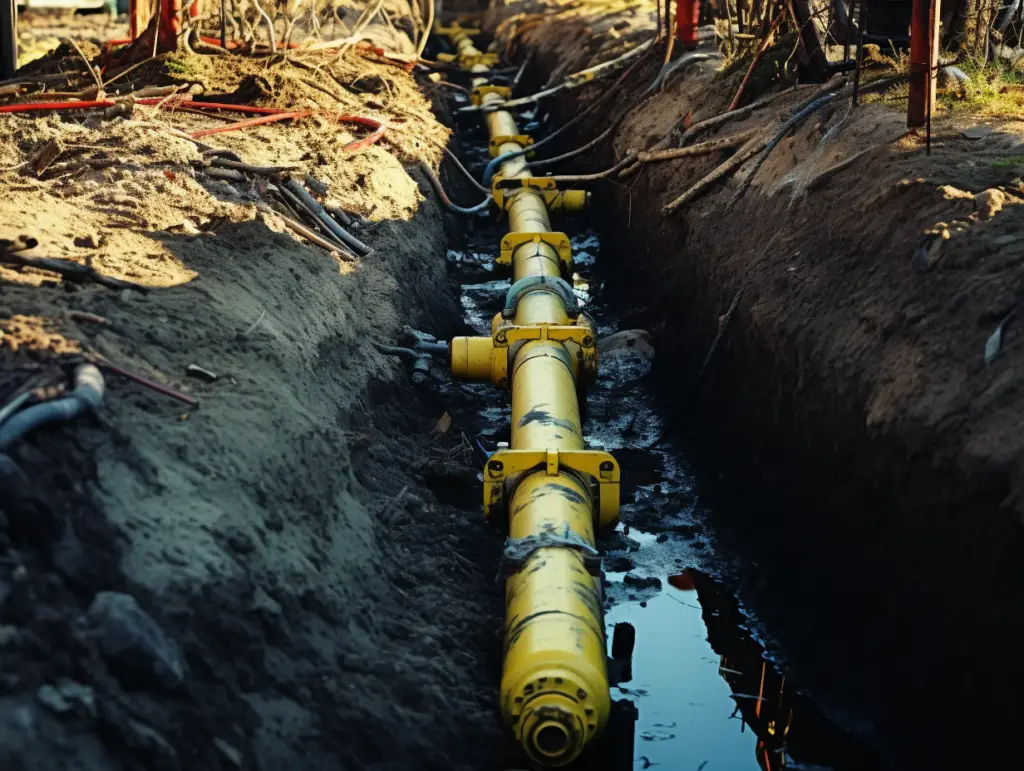
Key Takeaways
- Gas line installation for a fire pit grill requires a professional who is licensed and experienced.
- The cost to run a gas line to a fire pit grill can vary widely depending on factors such as distance, gas line type, and labor required.
- Comparing costs between professional and DIY installation is important, as well as considering potential additional costs such as permits and inspections.
Understanding Gas Line Installation
Basics of Gas Line Installation
Gas line installation is a process that involves running a gas line to a fire pit or grill to provide fuel. The cost of running a gas line to a fire pit or grill varies depending on several factors, including the distance from an existing source, the type of pipe used, and the labor required.
Steel gas pipe above ground and a specialized flexible gas pipe underground are generally used to install these lines.
The cost of running a gas line for an outdoor grill or fire pit is between $20 and $25 per linear foot. Running new gas lines will require a professional gas plumber to ensure proper installation.
Safety Precautions
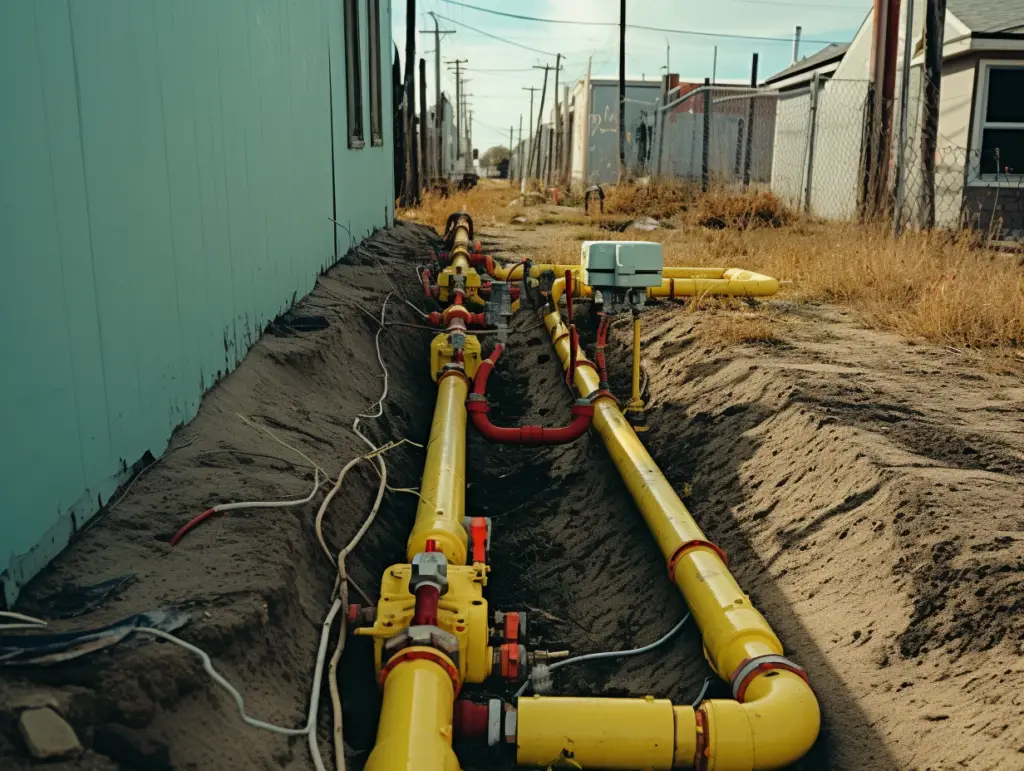
When installing a gas line for a fire pit or grill, it is essential to follow safety precautions to prevent accidents or injuries. Gas leaks can cause fires, explosions, and carbon monoxide poisoning, which can be deadly.
Here are some safety precautions to follow when installing a gas line:
- Hire a licensed professional gas plumber to install the gas line.
- Always turn off the gas supply before starting any work on the gas line.
- Use only approved materials and follow local codes and regulations.
- Test the gas line for leaks before using the fire pit or grill.
- Install a gas shut-off valve near the fire pit or grill to turn off the gas supply in case of an emergency.
By following these safety precautions, you can ensure that your gas line installation is safe and reliable. Always consult with a licensed professional gas plumber before installing a gas line to a fire pit or grill.
Cost Factors for Gas Line Installation
When it comes to running a gas line to a fire pit or grill, there are several factors that can influence the overall cost. These factors include material costs, labor costs, and permit costs.
Material Costs
The materials used in the installation of a gas line can significantly affect the overall cost. The cost of materials can vary depending on the type of gas line being installed, the distance from the gas source, and the size of the line.
Generally, the cost of materials can range from $10 to $25 per linear foot.
Steel gas pipes above ground and specialized flexible gas pipes underground are the most commonly used materials for gas line installations. Steel pipes are more durable and can handle higher pressure, but they can be more expensive. Flexible gas pipes, on the other hand, are more affordable and easier to install, but they may not be as durable as steel pipes.
Labor Costs
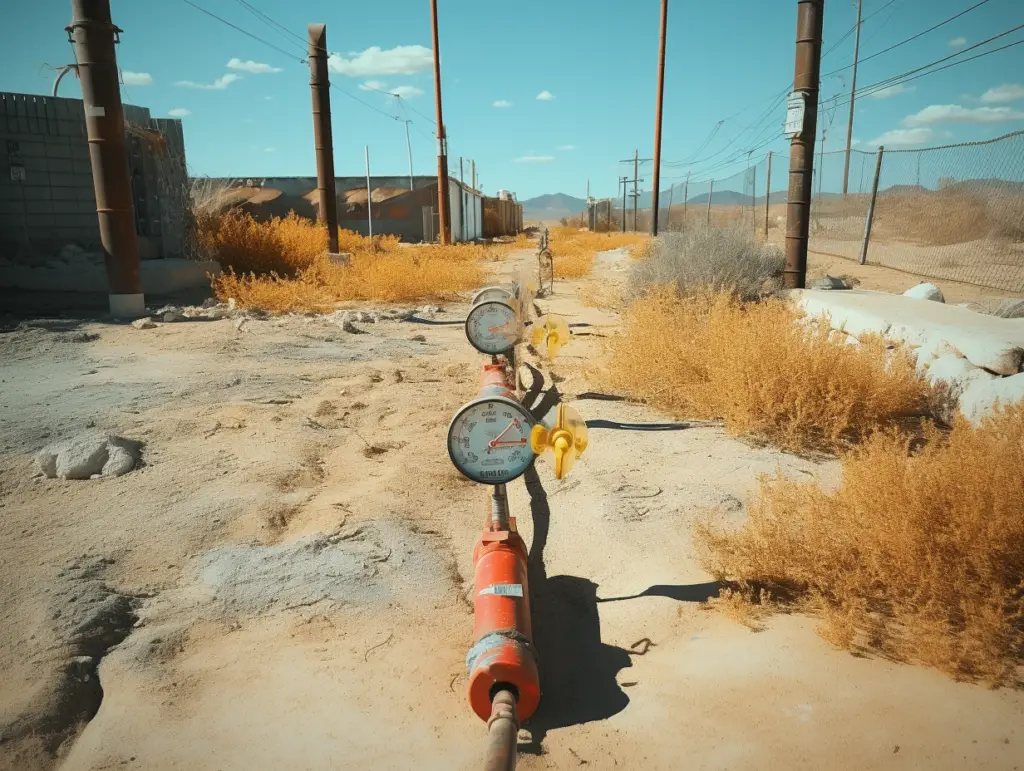
The cost of labor for gas line installation can also vary depending on the complexity of the installation and the experience of the installer. Labor costs can range from $50 to $150 per hour, with an average installation taking between 4 to 8 hours.
The cost of labor can also be affected by the location of the installation. If the installation is in a hard-to-reach area or requires excavation, the labor costs may be higher. Additionally, if the installer needs to work around other utilities or obstacles, the labor costs may also increase.
Permit Costs
Permit costs are another factor that can affect the overall cost of gas line installation. Depending on the location and type of installation, a permit may be required. Permit costs can range from $50 to $500, depending on the location and the complexity of the installation.
It is important to note that failure to obtain the necessary permits can result in fines or even legal action. Therefore, it is important to factor in permit costs when budgeting for a gas line installation.
In summary, the cost of running a gas line to a fire pit or grill can vary depending on several factors. Material costs, labor costs, and permit costs can all contribute to the overall cost of the installation. It is important to work with a qualified installer and obtain the necessary permits to ensure a safe and successful installation.
Fire Pit Grill Gas Line Requirements
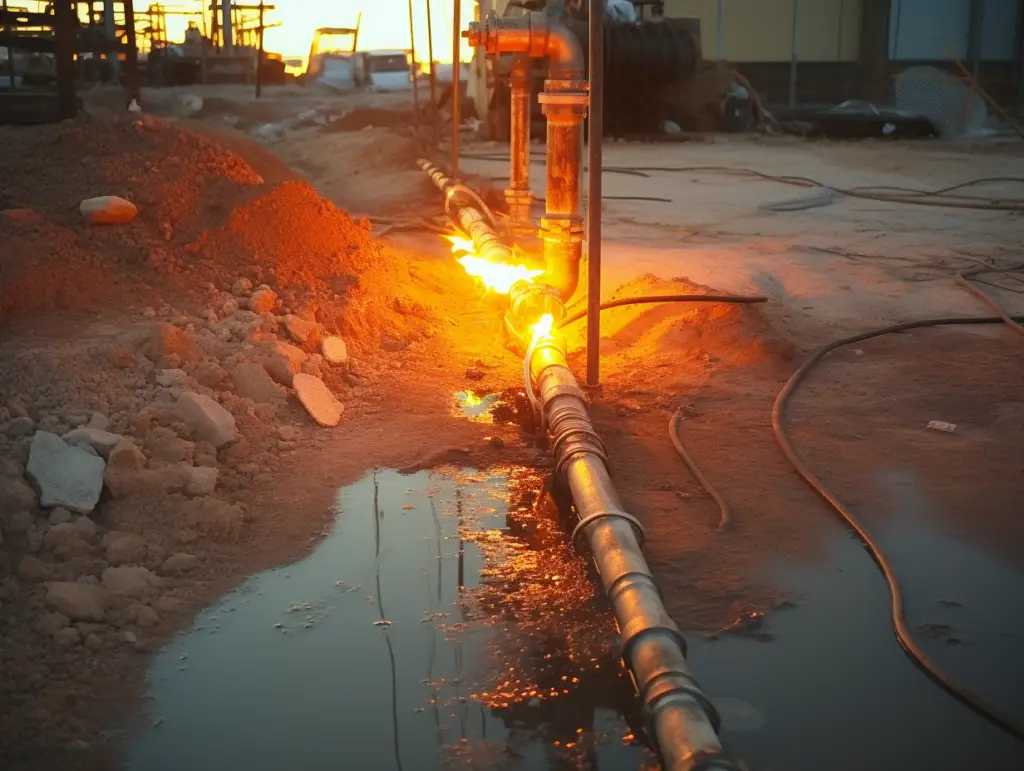
When installing a gas line for a fire pit grill, there are a few key requirements to keep in mind. In this section, we will discuss the gas type, line size, and placement requirements that you should be aware of.
Gas Type
The first requirement to consider when installing a gas line for a fire pit grill is the type of gas you will be using. In most cases, natural gas is the preferred choice for outdoor fire pits and grills. However, propane is also a viable option if natural gas is not available in your area.
Line Size
The size of the gas line you will need for your fire pit grill will depend on several factors, including the distance from the gas source, the BTU output of your grill, and the number of appliances you will be connecting to the line. In general, a 3/4-inch gas line is sufficient for most fire pit grills, but larger grills or longer distances may require a larger line.
Placement
When it comes to the placement of your gas line, there are a few important things to keep in mind. First, the line should be installed in a location that is easily accessible for maintenance and repairs. Second, the line should be buried at least 18 inches underground to prevent damage from landscaping or other outdoor activities. Finally, the line should be installed in a way that minimizes the risk of gas leaks or other hazards.
By following these gas line requirements, you can ensure that your fire pit grill is safe, reliable, and efficient. Whether you are a DIY enthusiast or you prefer to hire a professional, it is important to take the time to plan your gas line installation carefully to avoid any potential issues down the line.
Comparing Costs: Professional vs DIY Installation
When it comes to installing a gas line to a fire pit grill, homeowners have two options: hiring a professional or doing it themselves. Each option has its own advantages and disadvantages, including cost.
Professional Installation
Hiring a professional to install a gas line can be more expensive, but it can also provide peace of mind knowing that the installation is done correctly and safely. According to Angi, the average cost of gas line installation ranges from $120 to $1,350, with most homeowners spending between $260 and $820. The cost will depend on several factors, including the length and diameter of the line, the location of the gas source, and the complexity of the installation.
DIY Installation
For those who are handy and have experience with DIY projects, installing a gas line themselves can be a cost-effective option. According to Costimates.com, homeowners can expect to spend an average of $575 when doing it themselves. However, it’s important to note that this cost does not include the patio it’s built on, which can add additional costs.
When deciding whether to hire a professional or do it yourself, it’s important to consider the level of experience and knowledge required for the installation. Gas line installation can be dangerous if not done correctly, so it’s important to follow all safety guidelines and regulations. Additionally, some local codes and regulations may require a licensed professional to perform the installation.
Overall, the decision to hire a professional or do it yourself will depend on several factors, including budget, experience, and safety concerns.
Potential Additional Costs
When installing a gas line to a fire pit or grill, there may be additional costs beyond the initial installation. These costs can include upgrades and improvements, as well as maintenance and repairs.
Upgrades and Improvements
Upgrades and improvements can enhance the functionality and aesthetics of your fire pit or grill. Some potential upgrades and improvements include:
- Adding a gas meter: If your gas line cannot handle the increased demand of a new fire pit or grill, you may need to upgrade your gas meter. This can cost anywhere from $500 to $2,000, depending on the size and complexity of the upgrade.
- Installing a gas regulator: A gas regulator can help ensure that the gas pressure to your fire pit or grill is consistent and safe. This can cost between $50 and $200.
- Adding a timer or remote control: A timer or remote control can make it easier to use your fire pit or grill. This can cost between $50 and $500, depending on the complexity of the system.
Maintenance and Repairs
Like any appliance, a gas fire pit or grill may require maintenance and repairs over time. Some potential maintenance and repair costs include:
- Annual maintenance: It is recommended to have your gas fire pit or grill inspected and maintained annually to ensure it is functioning safely and efficiently. This can cost between $100 and $300.
- Gas leak repair: If you suspect a gas leak, it is important to have it repaired immediately. The cost of repairing a gas leak can vary depending on the severity of the leak and the location of the leak.
- Igniter repair or replacement: If the igniter on your fire pit or grill is not working, it may need to be repaired or replaced. This can cost between $50 and $200.
It is important to factor in these potential additional costs when budgeting for a gas line installation to a fire pit or grill. By being aware of these costs upfront, you can ensure that you are prepared for any future expenses.
Conclusion
In summary, running a gas line to a fire pit or grill can be a cost-effective and convenient option for outdoor cooking enthusiasts. The average cost of running a gas line for an outdoor grill or fire pit is between $20 and $25 per linear foot, depending on various factors such as the distance from the existing gas source, the type of gas pipe used, and the complexity of the installation.
While the cost of installing a gas line may seem high at first, it can save you money in the long run by eliminating the need for propane tanks or charcoal. In addition, gas grills and fire pits are more environmentally friendly than their traditional counterparts, producing fewer emissions and less waste.
It is important to hire a licensed and experienced professional to install your gas line to ensure safety and compliance with local codes and regulations. Make sure to get multiple quotes and compare prices and services before choosing a contractor.
Overall, running a gas line to your fire pit or grill can provide a convenient and efficient way to enjoy outdoor cooking and entertaining. With proper installation and maintenance, your gas line can provide years of use and enjoyment.
Frequently Asked Questions
What is the average cost to install a gas line for a fire pit grill?
The average cost of installing a gas line for a fire pit grill is between $20 and $25 per linear foot. The total cost varies depending on the distance from the gas source, the type of gas line used, and the complexity of the installation.
How much does it cost to run a gas line for an outdoor fire pit?
The cost of running a gas line for an outdoor fire pit depends on the length of the line, the type of gas line used, and the distance from the gas source. The average cost ranges between $20 and $25 per linear foot.
Can you run a gas line for an outdoor fire pit?
Yes, you can run a gas line for an outdoor fire pit. The installation requires a specialized flexible gas pipe underground or steel gas pipe above ground. However, it is recommended to hire a licensed professional to ensure the safety and proper installation of the gas line.
What is the cost to install a natural gas line for a grill?
The cost to install a natural gas line for a grill varies depending on the distance from the gas source, the type of gas line used, and the complexity of the installation. The average cost ranges between $20 and $25 per linear foot.
How much does it cost to install a gas line for a generator?
The cost of installing a gas line for a generator varies depending on the distance from the gas source, the type of gas line used, and the complexity of the installation. The average cost ranges between $20 and $25 per linear foot.
Is natural gas cheaper than propane for a fire pit?
Natural gas is generally cheaper than propane for a fire pit. However, the cost may vary depending on the location and availability of natural gas in the area. It is recommended to consult with a licensed professional to determine the most cost-effective fuel option for your fire pit.



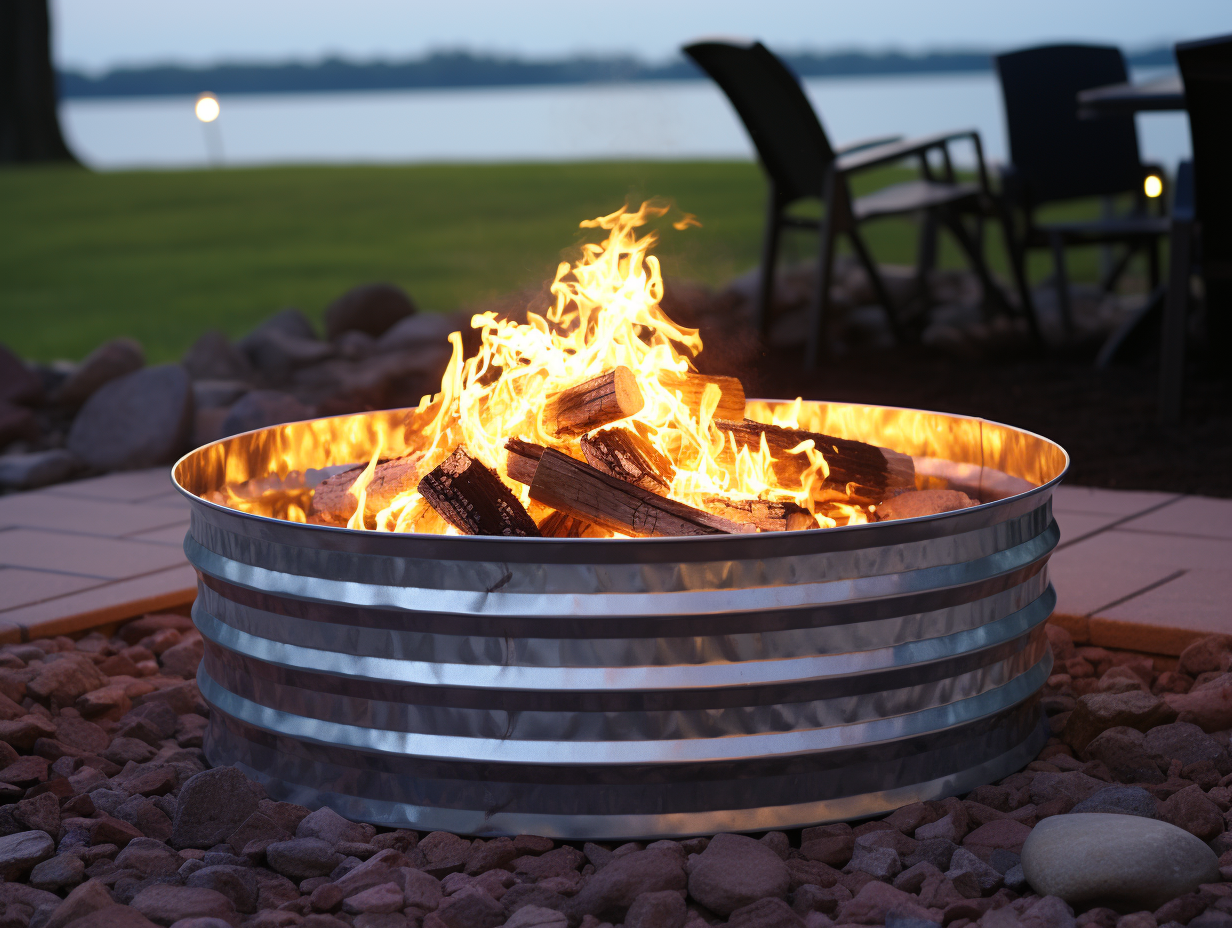
Leave a Reply